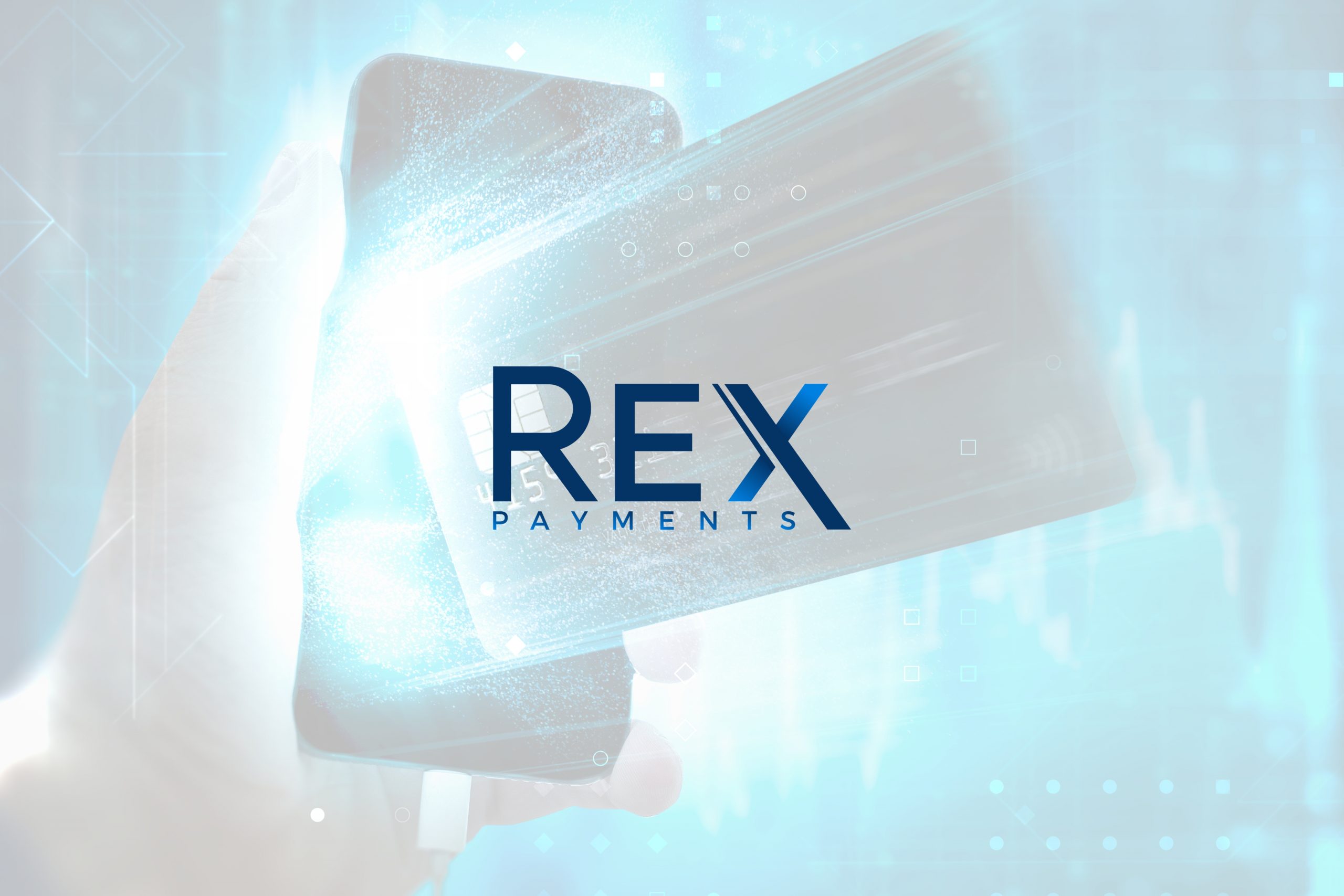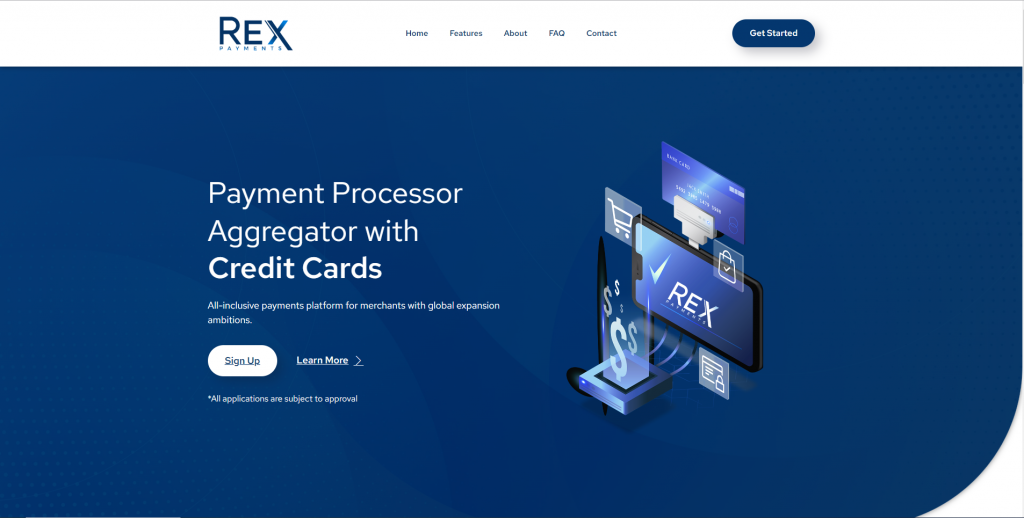
The world of payments is constantly evolving, with new technologies and innovations shaping the way we transact. As we move towards a more digital and cashless society, companies like RexPayments are at the forefront of revolutionizing the industry.
Payments have come a long way from the days of bartering and exchanging goods. With the rise of e-commerce and mobile banking, the way we make payments has drastically changed. As consumers become more tech-savvy and demand convenience, traditional payment methods are being challenged by innovative solutions.
RexPayments is a game-changer in the payments industry, offering a seamless and secure platform for individuals and businesses to transact. With their cutting-edge technology and forward-thinking approach, they are paving the way for the future of payments. In this article, we will explore how RexPayments is disrupting the industry and what it means for consumers and businesses alike.
Overview of the Current Payments Industry
The payments industry has been undergoing rapid transformation in recent years, with the advent of new technologies and the increasing adoption of digital payment methods. Traditional payment systems, such as cash and checks, are giving way to more convenient and efficient alternatives like mobile payments and contactless cards. This shift towards digitization has not only simplified the payment process for consumers but has also opened up new opportunities for businesses to streamline their operations and improve customer experience.
In addition, the rise of e-commerce and online shopping has further driven the growth of the payments industry, with online payment platforms becoming a crucial part of the global economy. As we dive into the overview of the current payments industry, it becomes evident that technological advancements and changing consumer behavior have significantly reshaped the way we make financial transactions.
The Growing Need for a Modern Payment System
The growing need for a modern payment system is evident in today’s world, where electronic transactions have become the norm. With the increasing reliance on technology, traditional payment methods such as cash and checks are proving to be limited and inadequate.
Electronic transactions have gained significant prominence due to their convenience and efficiency. In an increasingly connected world, people expect to be able to make payments without the need for physical currency or writing checks. A modern payment system allows for seamless and instant transactions, enabling individuals and businesses to complete transactions swiftly and effortlessly.
Furthermore, a modern payment system provides enhanced security measures compared to traditional methods. With the rise in online fraud and identity theft, it is crucial to have effective security protocols in place. Modern payment systems implement various security features such as encryption and two-factor authentication, ensuring the protection of sensitive financial information.
Efficiency is another advantage of a modern payment system. By digitizing payment processes, time-consuming tasks such as manually handling cash and reconciling checks are eliminated. This leads to faster transactions and reduced administrative burdens for both consumers and merchants.
Traditional Payment Systems and Their Limitations
Traditional payment systems, which primarily involve cash and checks, have several limitations that hinder their effectiveness in today’s digital age. These systems suffer from various flaws and drawbacks, including lack of security, higher transaction costs, and limited accessibility.
One of the major limitations of traditional payment systems is the lack of security. Cash can be easily stolen or lost, and checks can be forged or altered. This raises concerns about the safety of transactions and the potential for financial losses. In contrast, digital payment methods offer advanced encryption and authentication measures, providing a higher level of security for both individuals and businesses.
Moreover, traditional payment systems often entail higher transaction costs compared to digital alternatives. When using cash or checks, individuals may incur fees for issuance, processing, and clearing. Additionally, these methods require physical transportation and manual handling, resulting in time and effort costs. On the other hand, digital payment methods, such as credit cards or mobile wallets, streamline the transaction process and often involve lower fees, saving both time and money.
Furthermore, traditional payment systems have limited accessibility, especially in remote or underdeveloped areas. Cash might be the only viable option in these regions, leaving individuals without access to the benefits of digital transactions, such as online shopping or electronic bill payments. This lack of accessibility can hinder economic growth and financial inclusion.
Features of the RexPayments Platform
The RexPayments Platform is an innovative payment solution designed to streamline and enhance the payment process for businesses and individuals. This platform offers a range of features that cater to the diverse needs of users, enabling secure, efficient, and convenient transactions. From seamless integration with existing systems to customizable payment options, the RexPayments Platform is a comprehensive solution that revolutionizes the payment experience.
Secure Transactions with Advanced Encryption Technology
Secure transactions with advanced encryption technology are crucial in ensuring the confidentiality and integrity of sensitive information exchanged over networks. Encryption plays a pivotal role in achieving this security by converting data into an unreadable format that can only be deciphered with the correct decryption key.
There are several types of encryption algorithms commonly used to secure transactions. Two widely recognized ones are Advanced Encryption Standard (AES) and Rivest-Shamir-Adleman (RSA). AES is a symmetric encryption algorithm widely adopted due to its efficiency and high level of security. RSA, on the other hand, is an asymmetric encryption algorithm that uses a pair of keys – a public key for encryption and a private key for decryption.
To further strengthen the security of transactions, it is important to utilize secure protocols like Secure Sockets Layer (SSL) or Transport Layer Security (TLS). These protocols establish a secure communication channel between the user’s browser and the server, ensuring that data is encrypted during transit.
Another vital aspect is the use of strong encryption keys. Weak or easily guessable keys can compromise the security of transactions. It is essential to generate strong encryption keys that are sufficiently long and random to resist unauthorized decryption attempts.
Fast Transactions and Low Processing Fees
Fast transactions and low processing fees offer numerous benefits to users, significantly enhancing their overall experience. One of the key advantages of fast transactions is the ability to complete transactions quickly, saving users valuable time. With traditional transaction methods, such as bank transfers, users often have to wait for hours or even days before their transactions are processed. Fast transactions eliminate this waiting period, allowing users to carry out their transactions instantly, whether it’s purchasing goods or transferring funds.
In addition to time-saving benefits, low processing fees also enhance the user experience by reducing costs. High processing fees can be a burden on users, especially when conducting frequent transactions or for larger amounts. With low processing fees, users can conduct transactions at a lower cost, ultimately saving money.
The combination of fast transactions and low processing fees also provides convenience. Users can complete transactions quickly and at a lower cost, making it more convenient to engage in everyday financial activities. Whether it’s paying bills, making online purchases, or sending money to friends and family, the convenience of fast transactions and low fees allow users to carry out these activities more efficiently.
Overall, fast transactions and low processing fees significantly improve the user experience. They offer convenience, save time, and reduce costs. It enables users to conduct transactions quickly and at a lower cost, making financial activities more efficient and cost-effective.
Flexible Solutions for Consumers and Businesses Alike
There are several flexible solutions available for both consumers and businesses, providing options and advantages to meet their diverse needs. These solutions offer various benefits and features that can be summarized concisely.
For consumers, one flexible solution is the option to choose between different payment plans. This allows them to select a plan that aligns with their financial situation and preferences. Additionally, consumers can take advantage of flexible return policies, enabling them to return or exchange products easily if needed. This provides peace of mind and ensures customer satisfaction.
Another flexible solution for consumers is the availability of personalized services. Businesses now offer personalized recommendations based on individual preferences and purchasing history. This saves consumers time and effort by presenting them with tailored options that match their needs and interests.
For businesses, flexible solutions include the option to adapt operations based on customer demand. This means being able to scale up or down, depending on market conditions. This flexibility enables businesses to optimize resources efficiently and ensure cost-effectiveness.
Other advantages for businesses include the ability to provide a variety of payment methods to their customers, such as credit card, mobile payment, and installment options. This ensures convenience and enhances customer satisfaction.
Automation of Common Payment Tasks with AI
Automation of common payment tasks with AI has revolutionized the way businesses handle their financial operations. By leveraging artificial intelligence, companies can streamline various payment processes, eliminating the need for manual intervention and increasing efficiency. Some of the most commonly automated payment tasks using AI include invoicing, bill payment, transaction reconciliation, customer support, and fraud detection.
Invoicing is a labor-intensive process that can be time-consuming and prone to errors. AI-powered systems can automate the creation and delivery of invoices, ensuring accuracy and timeliness. Similarly, bill payment systems empowered by AI can automatically process and settle bills, eliminating the need for manual intervention and ensuring payments are made on time.
Transaction reconciliation is another area where AI plays a vital role. It can automatically match and reconcile transactions between different systems, reducing the risk of discrepancies and saving countless hours of manual effort.
AI-driven customer support in the payment industry has gained significant traction. Chatbots and virtual assistants can handle common queries, provide self-service options, and assist customers in making payments or resolving issues, enhancing the overall customer experience.
Finally, AI has proven indispensable in fraud detection. Advanced algorithms can analyze vast amounts of data to identify suspicious patterns, flagging potential fraudulent activities and preventing financial loss.
Integration With Existing Financial Systems
Integration with existing financial systems involves the seamless combination of different software or platforms to ensure compatibility, data migration, and overcome potential challenges.
Compatibility requirements are essential to ensure that the integrated systems work together effectively. This includes having support for the same data formats, protocols, and interfaces. It is crucial to identify if the systems are compatible with each other before proceeding with the integration process. Compatibility can also involve ensuring that the systems meet the necessary security standards and regulatory requirements.
Data migration is a critical step in integrating financial systems. It involves transferring data from the existing system to the new integrated system. This can be a complex process as it requires mapping the data fields, cleansing the data, and validating its accuracy. Migration can be done manually through data entry or automatically through data extraction and transformation tools. Data migration ensures that the new integrated system has the necessary information to function properly.
Potential challenges in integrating financial systems include data inconsistencies and errors, system incompatibility, and downtime during the integration process. Data inconsistencies and errors can occur due to differences in data formats or inaccurate data mapping. System incompatibility can arise when the existing systems lack the necessary features or capabilities to integrate smoothly. Downtime can disrupt business operations during integration, potentially leading to financial losses, and customer dissatisfaction.
Benefits of Using RexPayments
RexPayments is a leading payment processing solution that provides businesses with a secure and efficient platform to manage their transactions. With a user-friendly interface and comprehensive features, RexPayments offers numerous benefits that can greatly enhance the payment processes for businesses of all sizes. From streamlining operations to increasing customer satisfaction, utilizing RexPayments can revolutionize the way businesses handle payments and drive overall growth and success.
Improved Security and Privacy for Customers
Improving security and privacy for customers is crucial in today’s digital landscape. To achieve this, several steps can be taken.
Firstly, implementing encrypted communication protocols is vital. This ensures that any information exchanged between customers and your system is securely transmitted and cannot be intercepted by malicious actors. Utilizing protocols like HTTPS and SSL creates a secure connection.
Enforcing strong password requirements is another essential step. By setting guidelines that include a combination of alphanumeric characters, special symbols, and a minimum length, customers are encouraged to create more secure passwords. This reduces the likelihood of password-based attacks.
Regular security audits should be conducted to identify potential vulnerabilities in your system. This involves analyzing security protocols, configurations, and infrastructure to ensure they are up to date and effective. Any weaknesses identified should be promptly addressed.
User education is key in enhancing security and privacy. Providing customers with information on best security practices, such as avoiding suspicious links or regularly updating their devices, helps them understand potential risks and take appropriate precautions.
Lastly, implementing multi-factor authentication adds an extra layer of security. By requiring customers to provide additional proof of identity, such as a security code sent to their mobile device, unauthorized access to their accounts can be significantly mitigated.
Increased Efficiency in Financial Transactions
Advancements in technology and digital platforms have revolutionized financial transactions, resulting in increased efficiency. Real-time payment systems and blockchain technology have played a vital role in this transformation.
Real-time payment systems enable instantaneous transfers of funds between accounts. Gone are the days of waiting for days for a transaction to be completed. With real-time systems, transactions occur within seconds, allowing businesses and individuals to access their funds immediately. This not only saves time but also enhances overall efficiency.
Blockchain technology, on the other hand, brings a new level of transparency, security, and accessibility to financial transactions. Through its decentralized nature, blockchain eliminates the need for intermediaries, reducing costs and processing times. Transactions are recorded in a distributed ledger, which cannot be altered or tampered with, ensuring enhanced security. This technology also enables increased accessibility as it does not depend on traditional banking infrastructure. Even individuals without access to traditional banking systems can participate in financial transactions using their smartphones.
The benefits of these advancements are widespread and impactful. Faster processing times ensure timely payments, improving overall business operations. Reduced costs allow businesses to allocate their resources more efficiently. Enhanced security mitigates the risks associated with fraudulent activities. Improved transparency offers a higher level of trust and accountability. Lastly, increased accessibility ensures that financial services are available to everyone, promoting financial inclusivity and economic growth.
Cost Savings for Businesses
Businesses can implement various cost-saving strategies to maximize profits and reduce expenses. One effective approach is outsourcing non-core functions. By delegating tasks such as IT support, customer service, or payroll to external companies, businesses can save on hiring and maintenance costs. For example, a small e-commerce business may outsource its IT support to a specialized third-party vendor, rather than hiring a full-time IT staff.
Implementing energy-efficient measures is another way to save costs. For instance, businesses can switch to LED lighting, install motion sensors to control lighting and heating systems, or utilize natural lighting to reduce electricity bills. Additionally, investing in energy-efficient equipment and appliances can significantly lower energy consumption and expenses in the long run.
Negotiating discounts with suppliers is another valuable cost-saving strategy. By establishing strong relationships with vendors and leveraging bulk purchases or long-term contracts, businesses can secure better pricing terms and lower their procurement costs. This approach is particularly useful for businesses that heavily rely on raw materials or inventory.
Utilizing cloud computing services is another effective measure to reduce expenses. By moving their data storage and software solutions to the cloud, businesses can eliminate the need for expensive infrastructure and maintenance costs. Instead, they can access their files and applications remotely, paying only for the resources they use.
Optimizing inventory management is another crucial cost-saving strategy. By accurately forecasting demand, increasing inventory turnover, and reducing stockouts or overstock situations, businesses can minimize storage costs, prevent spoilage or obsolescence, and improve cash flow.

Conclusion
In conclusion, RexPayments is revolutionizing the payments industry by providing secure, reliable, and convenient solutions for businesses and consumers. The platform will make it easier and faster to process payments, helping to create a more efficient and cost-effective payments ecosystem. With its innovative technology, robust security infrastructure, and competitive pricing structure, RexPayments is set to become the go-to payment provider of tomorrow. With its focus on customer service and satisfaction, the company will continue to lead the industry in providing cutting-edge payment solutions.







